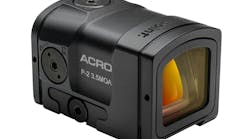With the advances in forensic science over the past decade, more and more convictions are heavily dependent on detailed and specific pieces of crime scene evidence. Hairs, fibers, threads from a piece of clothing, and of course DNA evidence, all add pieces to the puzzle of facts presented to a jury. In many cases much of this evidence is circumstantial and would not stand on its own, but as part of an overall picture it fits in.
But what if the evidence gathered is not what it appears to be? Most jigsaw puzzles are cut from fairly standard patterns. Therefore, it is possible for a piece from one puzzle to fit into a similar space in an entirely different puzzle. The pieces all fit, but the picture is not right. If this puzzle is used to convict someone, then it is possible for a person to be convicted of a crime they did not commit.
When the evidence is concocted
The crime scene investigation team combs the crime scene looking for any and all evidence that might shed light on the crime. Carpets are viewed with a variety of alternative light sources (ALS) in an attempt to illuminate any fibers or hairs on a rug that may have come from the perpetrator. However, a smart, methodical perpetrator might collect fibers from a variety of sources and leave them at the scene, causing investigators to look for a variety of things not associated with him and wasting precious time and energy in the process. A minute amount of colored plastic, like material from an asthma inhaler, might be found at a murder scene. If no one in the house was asthmatic, then it would be reasonable for investigators to assume that the perpetrator was an asthmatic and needed to use his inhaler after completing the crime. If this plastic had been taken from an empty, discarded inhaler found in the trash dumpster, it could send the investigation searching for an asthmatic when the real perp is perfectly healthy.
The trunk of a suspect's car or van is routinely screened for trace evidence. Someone who has planned their crime well in advance might collect carpet or other fibers from a variety of sources, and place them in the trunk in an attempt to confound the investigation and slow the process of obtaining reliable information from a crime lab that is already overburdened with samples. Another scenario might be where a husband kills his wife because she is having an affair with another man. He then plants fibers at the scene that he has previously removed from the lover's car or house in an attempt to point to the lover as the killer. Or maybe, he watches while the lover has a cup of coffee, then tosses the empty plastic cup in a dumpster. Retrieving the cup and planting it in the woods near his wife's shallow grave would provide investigators with the lover's fingerprints and potentially his DNA at the crime scene.
What you see or don't see
Most crimes are committed by people who act on impulse and do not plan out their crime in advance. However, many crimes are committed by serial criminals or individuals who methodically think through the various aspects of their crime so as to cover their tracks as well as possible. A notable example is Ted Kaczynski, the infamous Unabomber. Recent information released by the FBI indicates that Kaczynski used a variety of methods to elude detection and leave false evidence at these crime scenes. For eighteen years he left a trail of terror across the nation. A total of sixteen bombs were planted, killing three and injuring 23 people.
His trail of disinformation included many things to lead investigators in the wrong direction. One item was wearing shoes with the soles of smaller size shoes attached to their bottoms, leading the investigation to search for a smaller person. Kaczynski also collected human hairs from the seats of public buses and left them at bomb scenes. Pipe bombs and other types of homemade bombs can often be identified by determining the source of the pipe or end cap fragments and determining where they were sold. To evade this detection, he never bought any of his bomb material. Instead he would get materials from junkyards--materials that could not be traced. For this reason, initially Kaczynski was known to law enforcement as the "junkyard bomber."
Damn those latent prints
How many criminals have committed their perfect crime, only to be tripped up by a latent thumb, finger or palm print? An unseen print left on a door knob, a windowsill or door casing and leading to an arrest and conviction. With today's advanced methods for latent print detection and development, prints on almost any surface can be developed and identified.
Kaczynski knew the importance of fingerprints and went to great lengths to ensure he left none behind. He removed all fingerprints from the parts of his bombs, both his prints and anyone else's--prints that might be used to lead investigators back to him. If mailing a bomb, as he often did, he would buy only from stamp machines so that no clerk would be there to possibly remember him. He also bought stamps in rolls, because he knew that when a postal worker loaded the machine, he only touched the edges of the roll and the first stamp, a stamp he would discard. Using a homemade concoction of saltwater and soybean oil, he would wash any stamps that might have been touched by postal workers, to remove their fingerprints. All postal workers are fingerprinted when hired, and Kaczynski knew their prints would be on file in one of more databases available to lawmen. If they knew where he had bought stamps, they would be able to identify an area in which he might be living--an area that was a little too close for Ted's liking.
Most criminals are not as detail-oriented and methodical as the Unabomber. However, it is possible for false evidence information to be found at a crime scene, left either intentionally or unintentionally. For Investigators and forensic analysts, it is important to view each piece of evidence from this standpoint.


